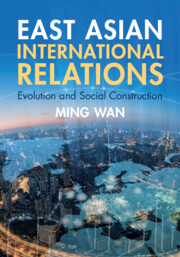Book contents
- East Asian International Relations
- East Asian International Relations
- Copyright page
- Dedication
- Contents
- Figures
- Maps
- Tables
- Preface
- Acknowledgments
- Abbreviations
- Part I Introduction and Theory
- Part II Historical Background
- Part III East Asia since 1945
- 5 East Asian Security
- 6 East Asian Growth
- 7 East Asian Money
- 8 East Asian Regionalism
- 9 The U.S.-China Strategic Rivalry
- 10 Democracy versus Autocracy
- References
- Index
9 - The U.S.-China Strategic Rivalry
from Part III - East Asia since 1945
Published online by Cambridge University Press: 28 November 2024
- East Asian International Relations
- East Asian International Relations
- Copyright page
- Dedication
- Contents
- Figures
- Maps
- Tables
- Preface
- Acknowledgments
- Abbreviations
- Part I Introduction and Theory
- Part II Historical Background
- Part III East Asia since 1945
- 5 East Asian Security
- 6 East Asian Growth
- 7 East Asian Money
- 8 East Asian Regionalism
- 9 The U.S.-China Strategic Rivalry
- 10 Democracy versus Autocracy
- References
- Index
Summary
Chapter 9 studies the U.S.-China rivalry, which has strengthened since the early 2010s. From an evolutionary perspective, strategy is defined as a phenotype or playbook and strategic rivalry as a contest of different phenotypes in the larger ecological environment. International relations are thus fundamentally defined by competition and selection. Competition may lead to divergence among units, and the mechanism of selection indeed requires different types. The United States and China represent two different types of political systems, although there has also been mutual learning. The U.S.-China rivalry is consequential for East Asia and the world because they are currently the two greatest powers, with the sources of their power constructed and adapted over years. The chapter demonstrates how the United States and China have been in different stages since the founding of the United States in 1776, experiencing ups and downs in their bilateral interactions since 1784.
Keywords
- Type
- Chapter
- Information
- East Asian International RelationsEvolution and Social Construction, pp. 248 - 279Publisher: Cambridge University PressPrint publication year: 2024

